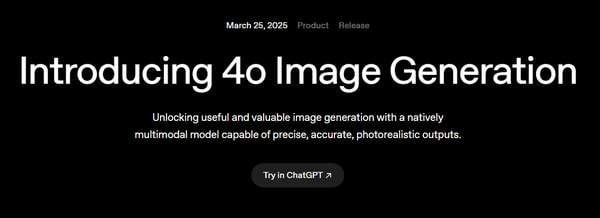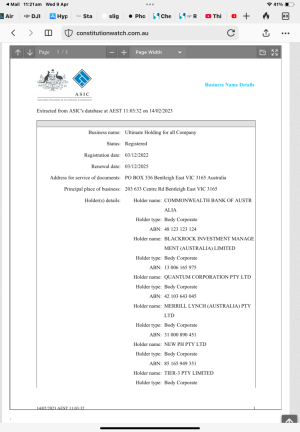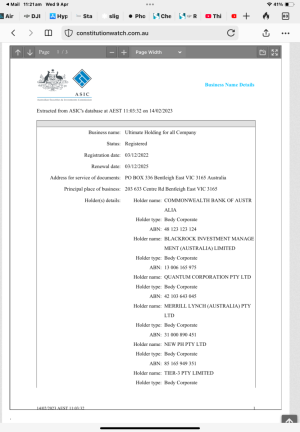ATO warns Aussies about new tax evasion practice using this tool
By
Danielle F.
- Replies 27
As the digital age continues to progress, we are also witnessing the ever-evolving landscape of technology.
Along with other advancements, artificial intelligence (AI) has been pushing the boundaries of what's possible.
However, with great power comes great responsibility, and it seems that the latest advancements might be a double-edged sword for taxpayers.
The Australian Taxation Office (ATO) warned Australians to stop using generative AI to fabricate receipts for tax fraud.
The caution came on the heels of ChatGPT's introduction of its new 4o Image Generation tool.
The 4o Image Generation Tool could conjure realistic images by giving it text prompts.
While this innovation could revolutionise specific industries, there has been a growing concern that it could pave the way for tax evasion.
Financial expert Josh Lee spoke about the potential misuse of this technology.
'It definitely adds another layer of complexity to it,' Lee, the director of Link Wealth Group, stated.
'If you're putting through a few little ones, what's the likelihood you're going to be audited? Unless you're trying to put through $10,000 or $20,000 worth of dodgy receipts, that's maybe a little bit different.'
'It's gonna make accountants and the ATO's lives definitely a lot harder in terms of cross-checking whether that's actually legitimate,' Lee added.
The 4o Image Generation Tool could make it more difficult to detect fraudulent claims, as the tool could create hyper-realistic images.
An online content creator recently shared the power of the image generation tool.
Tech content creator Daisy requested the generative AI tool to create a receipt for a restaurant.
In mere seconds, the AI produced a convincing image complete with fictitious pizza orders, the date and time of purchase, and the tax amount.
Watch Daisy's video here:
Source: @easy.daisy0/TikTok
This demonstration raised alarms for the ATO and suggested that Australia could be on the brink of a 'new era of tax evasion'.
Since the tool's release, ChatGPT boasted that the generative tool was the result of extensive work in translating text into images.
It could accurately render text, follow prompts, and even transform uploaded images or use them as visual inspiration for generative artwork.
Despite the potential for misuse, the ATO remains vigilant and warned those who attempt to use such tactics will be caught.
The ATO has a range of sophisticated tools and analytical techniques at its disposal, designed to detect inconsistencies and fraudulent activity.
They may also call respective banks to cross-check any financial information.
With the rise of generative tools, honesty remains the best policy when it comes to taxes.
The risks associated with tax evasion can be severe and should include penalties, interest charges, and even prosecution.
As we embrace the convenience AI brings into our daily lives, it's crucial to remember the legal and ethical implications of how we use technology.
The ATO's warning should be a reminder that while AI can be a powerful ally, it should never be used as a tool for deception.

Have you encountered any AI-generated content that's made you do a double-take? How do you feel about the potential for AI to be used in dishonest ways? Share your stories and opinions about this contentious topic in the comments below.
Along with other advancements, artificial intelligence (AI) has been pushing the boundaries of what's possible.
However, with great power comes great responsibility, and it seems that the latest advancements might be a double-edged sword for taxpayers.
The Australian Taxation Office (ATO) warned Australians to stop using generative AI to fabricate receipts for tax fraud.
The caution came on the heels of ChatGPT's introduction of its new 4o Image Generation tool.
The 4o Image Generation Tool could conjure realistic images by giving it text prompts.
While this innovation could revolutionise specific industries, there has been a growing concern that it could pave the way for tax evasion.
Financial expert Josh Lee spoke about the potential misuse of this technology.
'It definitely adds another layer of complexity to it,' Lee, the director of Link Wealth Group, stated.
'If you're putting through a few little ones, what's the likelihood you're going to be audited? Unless you're trying to put through $10,000 or $20,000 worth of dodgy receipts, that's maybe a little bit different.'
'It's gonna make accountants and the ATO's lives definitely a lot harder in terms of cross-checking whether that's actually legitimate,' Lee added.
The 4o Image Generation Tool could make it more difficult to detect fraudulent claims, as the tool could create hyper-realistic images.
An online content creator recently shared the power of the image generation tool.
Tech content creator Daisy requested the generative AI tool to create a receipt for a restaurant.
In mere seconds, the AI produced a convincing image complete with fictitious pizza orders, the date and time of purchase, and the tax amount.
Watch Daisy's video here:
Source: @easy.daisy0/TikTok
This demonstration raised alarms for the ATO and suggested that Australia could be on the brink of a 'new era of tax evasion'.
Since the tool's release, ChatGPT boasted that the generative tool was the result of extensive work in translating text into images.
It could accurately render text, follow prompts, and even transform uploaded images or use them as visual inspiration for generative artwork.
Despite the potential for misuse, the ATO remains vigilant and warned those who attempt to use such tactics will be caught.
The ATO has a range of sophisticated tools and analytical techniques at its disposal, designed to detect inconsistencies and fraudulent activity.
They may also call respective banks to cross-check any financial information.
With the rise of generative tools, honesty remains the best policy when it comes to taxes.
The risks associated with tax evasion can be severe and should include penalties, interest charges, and even prosecution.
As we embrace the convenience AI brings into our daily lives, it's crucial to remember the legal and ethical implications of how we use technology.
The ATO's warning should be a reminder that while AI can be a powerful ally, it should never be used as a tool for deception.
Key Takeaways
- The Australian Taxation Office warned against the use of generative AI to create fake receipts for tax evasion.
- ChatGPT's Image Generation tool could create realistic images of receipts, which could potentially be used for fraudulent tax deductions.
- Financial experts highlighted that such practices add complexity to the process of verifying legitimate claims and could make the ATO's job harder.
- The ATO warned that people engaging in such activities could get caught and may face consequences.










